23 Different Types of Plaid Fabric (Easy Guide)
Amidst the festive holiday season, plaid and checkered patterns can be seen in all kinds of sewing projects. It may surprise you how many patterns there are, ranging from the striking Buffalo Check to the intricate Madras Plaid. Today we are delving into the different types of plaid fabric.
To pinpoint the perfect style that resonates with you, familiarize yourself with the diverse types of plaid fabric and checkered designs. Plaid fabric is great for our Drawstring Bag or Wine gift bag.
Plaid and checkered motifs consist of intersecting vertical and horizontal lines, either printed or woven.
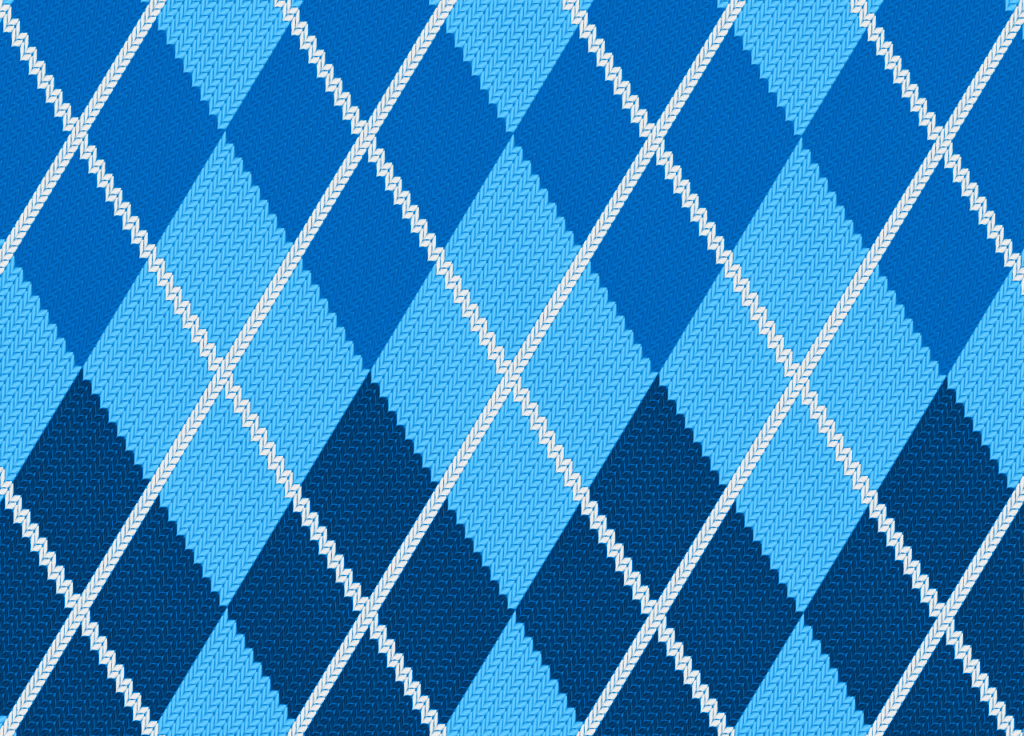
Plaid patterns encompass intricate arrays of vertical and horizontal stripes, featuring a medley of colors. Conversely, checkered patterns exhibit symmetrical, recurring designs, typically utilizing just two colors.
Within this article, you will delve into the names of the most popular checkered and plaid designs.
Additionally, you will delve into the historical origins of Scottish tartans plaids. Lastly, you will gain insight into the essence of a checkered aesthetic.
Table of Contents
What Are The Types of Plaid Fabric?
A checkered fabric pattern is characterized by symmetrical intersecting vertical and horizontal lines. While this design might incorporate more than two colors, the color arrangement itself will exhibit symmetrical repetition.
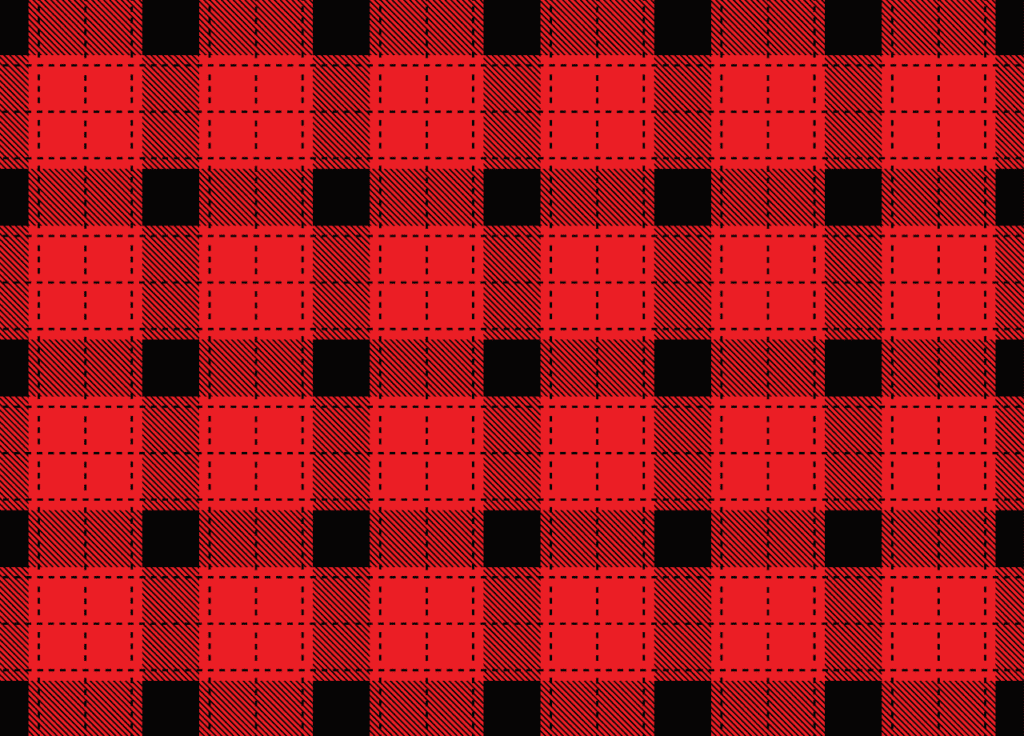
While there are certain exceptions, such as the diagonal diamond squares seen in an Argyle check, the majority of checkered fabrics adhere to the conventional checkerboard appearance.
However, checkered designs can encompass an array of pattern sizes. Patterns like gingham or the houndstooth pattern often found in wool suits or coats can feature diminutive, intricate arrays of repeating squares. In contrast, more contemporary variations like the buffalo check frequently sport larger squares.
The sheer variety of these patterns is remarkable, given the fundamental checkerboard essence of the base design.
Check patterns find extensive application in suiting attire, yet they also retain popularity in clothing items such as dresses and women’s blouses.
Some people would say they are a classic pattern especially with red with a white background.
What is a Plaid Pattern?
A plaid pattern consists of intersecting vertical and horizontal lines that crisscross, exhibiting varying widths.
Historically, this intricate motif was intricately woven into the fabric; however, in contemporary times, more economical plaid designs might employ printing techniques.
Originating in Scotland as Tartan plaids, this kind of pattern played a pivotal role in distinguishing clan heritage.
Diverging from the uniform, repetitive arrangement of squares found in checks, plaids often boast lines of diverse widths and an array of colors, resulting in a more intricate motif.
Plaid designs exude a general symmetry due to the repetition of each unique “sett” in the pattern.
However, they don’t adopt the orderly, symmetrical appearance of a checkerboard due to the varying widths of all the color bands.
The plaid we are familiar with today had its origins in 18th-century Scotland, and it took on a role of significant national symbolism during a period when the English invaders sought to prohibit Scottish individuals from donning it.
Interestingly, the term “plaid” itself originates from a Gaelic word denoting a blanket.
In contemporary times, numerous Scottish clans showcase their distinct tartan plaid patterns, notably in kilts and other ceremonial attire.
Certain designs have achieved widespread recognition, such as the renowned Black Watch plaid.
Popular Checkered Pattern Names
Each distinct checkered design possesses its own unique name and historical background. Nevertheless, the enduring popularity of checkered patterns over an extensive period underscores people’s affinity for the soothing and repetitive characteristics inherent to this type of design.
The widespread appeal of checks has spurred the emergence of a plethora of diverse designs spanning the past few centuries.
For instance, the distinct diagonal checks within the diamond-shaped pattern are referred to as “argyle.” In this context, a concise overview detailing the most renowned checkered designs is available for your perusal!
Buffalo

Often erroneously referred to as “buffalo plaid,” this elementary design features a striking arrangement of red and black checks, formed by intersecting red and black fabric stripes.
Typically, this design is crafted from flannel, a material that can incorporate cotton or synthetic fibers. One constant characteristic of flannel is its soft, velvety surface, achieved by brushing the fabric with metallic bristles.
The distinctive and sizable squares characterizing this iconic American pattern likely gained popularity when public relations efforts sought to enhance the image of the logging industry by portraying lumberjacks as symbols of American fortitude and self-reliance.
Clearly, the campaign proved effective, given that buffalo plaid maintains its popularity to this day!
Argyle

The classic Argyle checkered pattern may not immediately evoke the image of a standard checkerboard due to its diagonal squares.
Yet, this design endures as one of the most consistently favored variations of checks within the realm of fashion.
Characterized by diagonal bands of color that form diamond shapes within the material, this kind of check often incorporates narrow diagonal lines of another hue, generating an overlay of additional diamond shapes.
One could make the case that this symmetrical diamond pattern falls within the plaid category, tracing its origins back to Clan Argyll in Scotland!
In contemporary times, this check design primarily graces men’s sweaters and dress socks.
However, modern fashion trends have propelled it into a sought-after option for women’s sweater vests as well.
Checkerboard
The checkerboard design presents the simplest form of a checked pattern, exhibiting alternating squares in two distinct colors, forming a regular checkerboard arrangement.
In contemporary times, this design is likely to be printed onto the fabric, often employing vivid and attention-grabbing color combinations such as pink and green, or red and grey, among numerous other possibilities.
Historically, this design might have been achieved using a twill weave technique with two threads of different colors, resulting in uncomplicated squares of contrasting hues.
This striking pattern tends to experience fluctuating levels of popularity within the realm of fashion. Currently, you might come across this design in items like sweaters or tennis skirts.
Ichimatsu
Ichimatsu checks, also known as “ichimatsu moyo” design, bear a striking resemblance to the checkerboard pattern.
This design features alternating squares of color and traces its roots back to the Japanese kimono tradition, boasting a rich and extensive history.
Originally termed “stone pavement” in Japanese, it aptly describes the pattern’s structured arrangement.
Notably, a renowned Japanese Kabuki actor contributed to the pattern’s popularity, particularly in the context of kimonos.
In present times, this pattern symbolizes prosperity due to its ceaselessly repeating squares. One can visualize a bank account accumulating endless dollars when adorned with this design!
Windowpane
In contrast to the solid squares commonly found in various checkered designs, a windowpane check presents a distinct appearance.
This pattern comprises slender lines that fashion boxes against a backdrop of solid color. The resemblance to the traditional lead divisions that once held window pane glass in place lends its name to this design.
Characterized by a refined and intricate demeanor, windowpane checks exude a sense of sophistication unlike some of the more playful checkered patterns.
Consequently, these windowpane checks retain their popularity, particularly within the realm of refined suits and jackets.
Black and White Checkered Patterns
Although these patterns can be found in a multitude of colors, specific checkered designs are most commonly recognized in classic black and white variations.
Notably, the houndstooth, shepherd’s check, and tattersall check designs fall into this category of popular black and white adaptations.
Houndstooth

The houndstooth checkered pattern boasts a truly distinctive design characterized by staggered squares, formed through the interplay of different-colored warp and weft threads within a twill weave structure.
While a houndstooth design can be woven using a spectrum of vibrant threads, it most frequently graces the scene in the timeless combination of black and white.
Its moniker is derived from the jagged resemblance of the staggered squares to a dog’s pointed teeth.
This pattern has enjoyed enduring popularity, particularly in the realm of suits and jackets. It’s worth noting that even the renowned Christian Dior featured the houndstooth pattern in one of his early iconic fashion shows.
In contemporary times, this design finds its place in wool coats, suits, as well as both men’s and women’s formal attire.
Shepherd’s Check
The shepherd’s check resembles a conventional checkerboard design with uniform squares in two distinct colors, often black and white.
Nevertheless, this design exclusively employs a twill weave technique, resulting in the formation of stylish two-toned squares within the overall pattern.
Notably, shepherd’s check typically incorporates very diminutive squares, setting it apart from the fundamental checkerboard pattern that can encompass considerably larger squares.
Black and white twill-weave shepherd’s check designs may not boast the same widespread popularity as the houndstooth pattern, yet you can still discover this design adorning various pieces such as flannel shirts, scarves, and certain snug outerwear options.
Tattersall Check
The tattersall check bears a resemblance to the windowpane design, with the notable distinction that it overlays two sets of slender squares upon each other.
Typically, these fine squares are intricately woven into the fabric, rather than relying on a printing technique for their creation.
This design is available in the timeless combination of black and white, as well as in soft pastel hues ideal for spring, along with a variety of other vibrant color combinations.
Curiously, this particular style of checkered design has its origins in an English locale named Tattersall, known for its horse market.
Within this context, horse traders utilized distinctive blankets for their equines, featuring a pattern that came to be recognized as the “tattersall” design.
Presently, this design is predominantly encountered in the realm of suits, jackets, and select sweater styles.
Small Checkered Pattern
Indeed, specific checkered patterns tend to showcase smaller checks in contrast to the large squares of designs like Buffalo checks. Such patterns encompass mini and pin checks, as well as the majority of ginghams and graph checks.
Dupplin
The Dupplin check showcases a sophisticated composition that integrates a windowpane check atop another type of check, such as a checkerboard or a houndstooth pattern.
Available in a diverse array of colors, this design tends to emanate a more relaxed and less formal aesthetic.
The presence of the renowned Dupplin Castle in Scotland implies that this pattern could potentially trace its roots back to a form of Scottish tartan plaid.
In contemporary times, this intricate checked design is predominantly spotted in casual flannel or cotton shirts.
Gingham
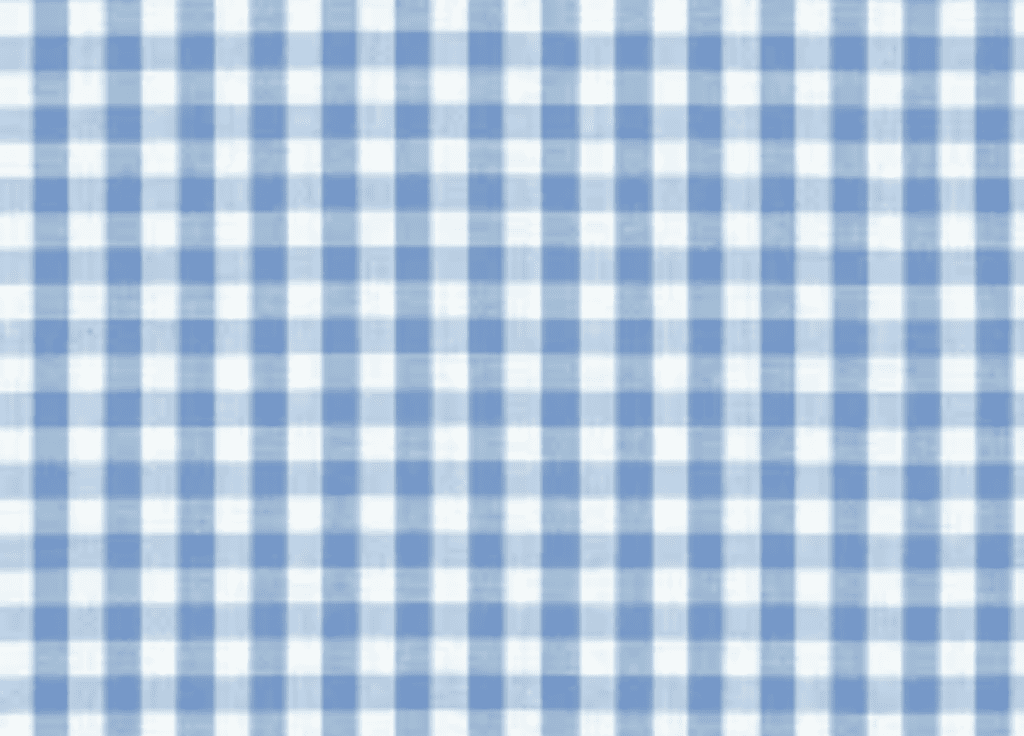
You’re absolutely right! Gingham refers to a specific type of fabric, yet its renowned American checkered pattern, often found in pastel shades such as blue, pink, or red, is indeed classified as a type of checkered design.
Gingham fabric can now be encountered with squares of varying sizes, but its classic small squares continue to retain their popularity.
Characteristic of gingham is its composition of lightweight cotton or a cotton blend material. Its prominence surged during the era of the extensive cotton industry in the Southern United States prior to the Civil War, and its enduring popularity persists today due to its cheerful and vibrant appearance.
Glen Check
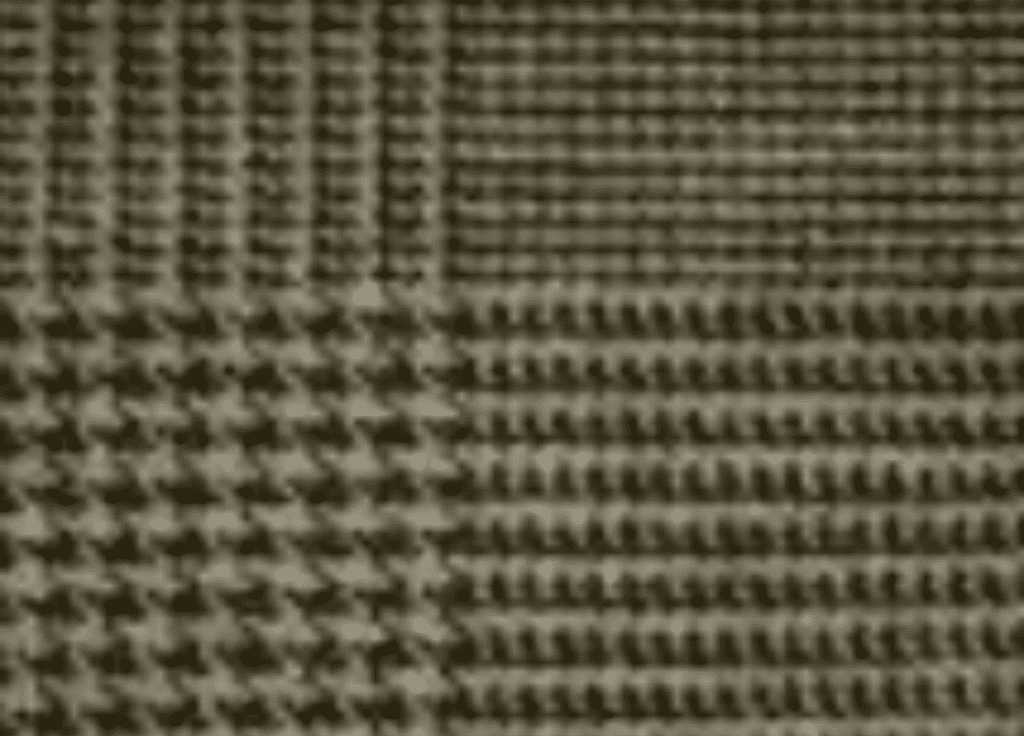
The Glen check design is sometimes also referred to as a Glen plaid due to the intricate arrangement of contrasting squares from various checkered patterns within this design.
Essentially, the Glen check design forms a “sett,” which is a distinct section of a plaid pattern, containing multiple squares featuring different types of checks, such as houndstooth checks.
This elaborate design is prevalent in certain suiting materials today, although its highest popularity was achieved during instances when the Prince of Wales donned it in a number of iconic appearances.
Typically, the Glen check design is found in more subdued color schemes like muted black and white or various shades of grey, as opposed to bolder and more vibrant color combinations.
Graph Check
The graph check design is essentially a miniature rendition of the windowpane check. It comprises fine and delicate lines that construct squares against a backdrop of solid color. Drawing a parallel to graph paper, this design derives its name from its resemblance to such paper.
This discreet yet sophisticated design can exude an air of elegance when applied to refined suiting fabrics, or it can serve as a subtle textural element to complement a more relaxed pair of jeans.
Regrettably, this specific design lacks a distinctive historical origin and seems to have evolved as a contemporary fashion trend inspired by the traditional windowpane check.
In contemporary times, the graph check finds its place across a wide spectrum of apparel, ranging from women’s dresses to men’s button-down shirts.
Mini Check

“Mini check” acts as an umbrella term encompassing various diminutive checkered patterns, which could involve tiny gingham or checkerboard designs, among others. These patterns frequently manifest in lively bright or pastel hues, projecting a relaxed and uplifting style that finds popularity in skirts and shirts.
Should you seek a particular material, you could explore options like mini check wool, mini check gingham, or mini check flannel. Within these variations, you might encounter an array of designs ranging from numerous houndstooth checks and windowpane checks to basic gingham-style squares.
Pin Check

Pin check fabric boasts minuscule squares that resemble the heads of sewing pins due to their diminutive size. When viewed from afar, this fabric might appear to be of a solid color due to the seamless integration of the tiny pattern.
The squares, comparable in size to dots, are so minute that they’re crafted by the interweaving of individual yarns intersecting with others in the fabric, forming a subtle yet intricate design.
Indeed, the refined pin check design frequently graces shirts and even suits. However, it’s crucial to distinguish pin checks from pinstripe patterns—pin checks maintain their characteristic tiny squares, consistent with the nature of all checkered patterns!
Popular Plaid Pattern Names
In the contemporary landscape, a myriad of plaid patterns exists, spanning the spectrum from classic Scottish clan tartans to the all-encompassing American representation of any form of intersecting stripes. Certain designers view “plaid” as a comprehensive design category that envelops not only checks and gingham but also encompasses a broad array of diversified stripes within a fabric.
Indeed, the origins of plaid trace back to Scotland’s highlands, with many of the enduringly popular plaid patterns being directly associated with specific Scottish clans.
In contrast to the even symmetry of checked designs, plaid patterns don’t adhere to the same regular arrangement, yet they do consist of repeating units known as “setts.” A sett can be envisioned as a complete section within the plaid design, contributing to its overall composition.
Glen Plaid

Also recognized as the Glen Check design or the Prince of Wales plaid, this iconic motif significantly contributed to elevating plaid to the realm of high fashion.
This design can be categorized as both a checked and a plaid design, given its incorporation of checkered squares and superimposed squares bordered by a delicate line of contrasting color.
The design obtained official registration by a Scottish weaver in 1840, but its renown soared when the Countess of Urqhart Castle implemented the design, woven in cozy wool, as the winter staff uniform.
It was during the period when King Edward VII held the title of Prince of Wales that he observed the staff adorned in their elegant uniforms, leading him to adopt the pattern for several of his own suits!
Madras Plaid

Diverging from the conventional origins of plaid, Madras plaid has its roots in India as a lightweight cotton fabric adorned with playful designs, perfect for the summer season.
This fabric enjoyed considerable popularity in the Philippines during the 1800s, where it was utilized by women to craft cooling saya skirts and relaxed pants.
Traditionally, Madras plaid was dyed using natural vegetable and plant-based materials, yielding faded, delicate shades. However, contemporary iterations of Madras plaid might encompass more vibrant stripes and squares.
In modern times, Madras plaid frequently graces items like canvas shorts, summer shirts, beach attire, and even sandals or shoes ideal for the warmer months.
Burberry Plaid
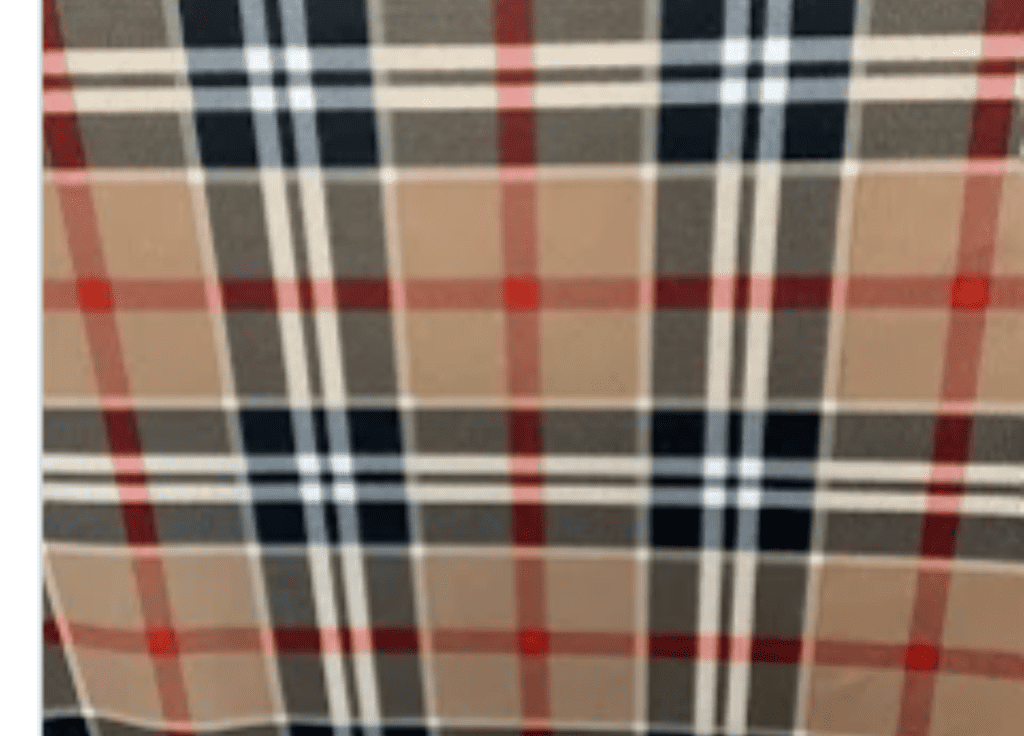
Burberry plaid, also known as Burberry check, showcases a distinctive arrangement of delicate squares overlaid on a tan backdrop.
This renowned design was introduced by the Burberry clothing company in the 1920s as part of the promotion for a new line of wool coats.
Over time, the Burberry check evolved into a symbol of status, particularly during the 1990s, and the company capitalized on its popularity by incorporating it into a wide range of products, from skirts to scarves.
However, in present times, the Burberry company has significantly scaled back the utilization of the Burberry check design. Nevertheless, vintage Burberry check items remain prevalent in the market, offering a substantial array of options for those interested.
Famous Plaid Patterns
Numerous plaid patterns boast distinct heritage or a devoted following, yet a select few attain a truly iconic status. Notably, the Royal Stuart and Black Watch plaids fall within this esteemed category.
Royal Stewart Tartan
First documented in the 1830s, the vivid red and green tartan design has a rich historical link to the royal house of Stewart. In contemporary times, this tartan design holds a distinct association with Queen Elizabeth II, and it stands as one of the most iconic tartan designs.
It showcases a vibrant red backdrop adorned with intersecting blue, green, and yellow lines of diverse widths.
In the United States, this particular tartan often makes appearances during the Christmas holiday season. While this tartan is officially associated with the Queen of England, people worldwide wear and relish its vibrant hues, transcending geographical boundaries.
Black Watch
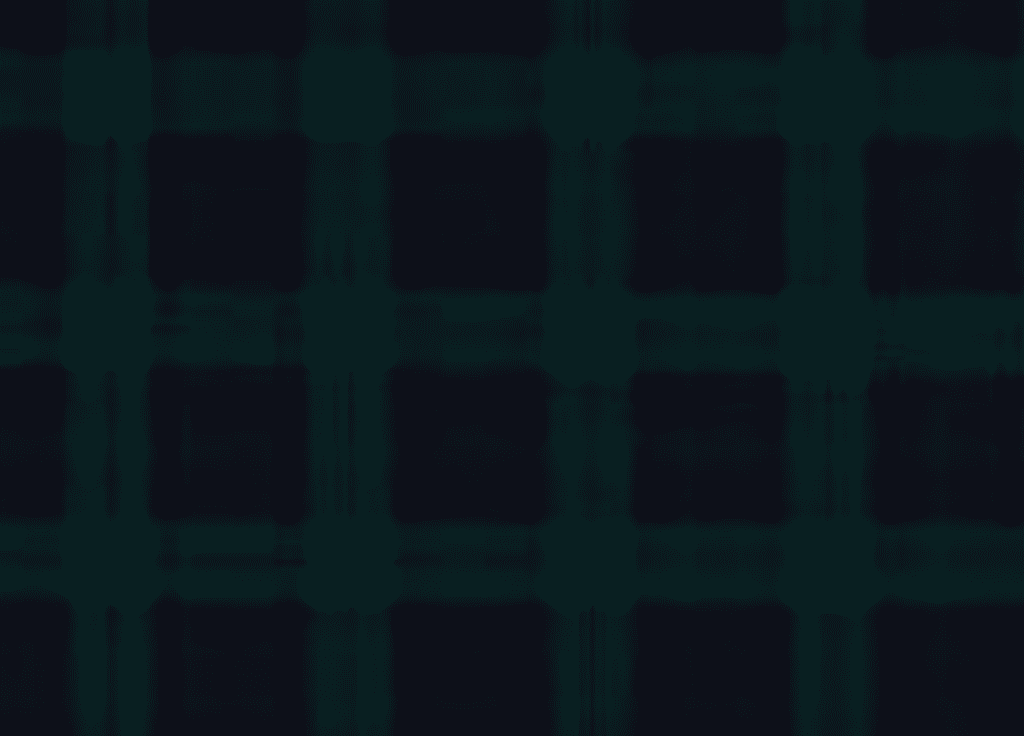
The Black Watch Tartan was crafted with the intention of being worn by distinct Scottish military units as a way to distinguish themselves from other Scottish clans and organizations.
These military units donned the unique plaid kilts, and the Black Watch plaid was proudly worn by various Scottish military units for an impressive span of over 250 years. This particular plaid design encompasses intersecting stripes in hunter green, navy blue, and black, each varying in width.
Indeed, the Black Watch Tartan was specifically designed for usage by distinct Scottish military units as a means of setting themselves apart from other Scottish clans and organizations.
These military units adopted the distinctive plaid kilts, and the Black Watch plaid was proudly worn by various Scottish military units for an extraordinary duration spanning more than 250 years.
This particular plaid pattern consists of intersecting stripes in shades of hunter green, navy blue, and black, with each stripe varying in width.
Scottish Plaid Names
The majority of plaids originated in Scotland and bear Scottish names because authentic tartan patterns evolved as distinctive identifiers for Scottish clans.
Clan members could don kilts or plaids woven in these unique designs to recognize one another, regardless of their whereabouts.
Here, you’ll find a concise overview of several significant terms and types of Scottish plaids.
Tartan
The term “tartan” encompasses any form of Scottish plaid or a woven arrangement of intersecting horizontal and vertical lines, resulting in grid-like shapes.
A clan’s distinct plaid design can be referred to as a “clan tartan.” The term “tartan” likely finds its origins in the French word “Tartaine,” which signifies checks.
The usage of the term “tartan” can be somewhat perplexing, especially in the United States where it often denotes any variety of plaid design.
For instance, you might come across Christmas tartans, which can be used for skirts to encircle the base of a Christmas tree.
For practical understanding, tartans can be viewed from both generic and specific perspectives. Specific tartan designs are exclusive to particular Scottish clans and are not meant to be worn by individuals outside of that heritage.
Alternatively, you can utilize the term “tartan” in a more general sense to encompass any type of plaid design.
Clan Wallace

The Clan Wallace tartan offers two distinct patterns: the Wallace Dress design showcasing red and black, and the Wallace Hunting variant characterized by greens and blues.
This traditional plaid exhibits notable resemblances to the iconic Rob Roy tartan. Its continued popularity can be attributed to its adoption and mass marketing by several prominent designers during the early 1900s.
Beyond its presence in contemporary fashion, Clan Wallace holds profound historical importance in Scottish history, an aspect most famously depicted in the movie “Braveheart.”
Interestingly, this clan tartan finds its way into numerous contexts today, even appearing on products like Scotch tape manufactured by 3M.
Balmoral
The Balmoral tartan boasts a strikingly vivid red backdrop, accentuated by broad black stripes and delicate yellow and green lines intricately woven into its plaid motif.
Notably, this plaid design was conceived by Prince Albert, the husband of Queen Victoria, back in 1853, and it has remained in possession of the British royal family since then.
Named after the royal family’s residence in Balmoral, the design purportedly mimics the appearance of streaked granite characteristic of Balmoral Castle.
In contemporary times, wearing this distinctive plaid pattern requires official permission from Her Majesty. Nonetheless, one can easily come across similar designs readily available in numerous popular plaid clothing items.
Lindsay
Clan Lindsay’s history traces back to the 12th century within documented Scottish annals, although its official tartan wasn’t recorded until the 1800s.
This tartan features a dark red background adorned with blue stripes that together form a diverse arrangement of squares. As is customary with most clan tartans, it is ideally worn by individuals with a genuine connection to the clan.
The enduring popularity of this tartan can be attributed in part to the extensive size of the clan in contemporary times.
As a result, you can conveniently find online stores offering Clan Lindsay kilts and associated items.
Plaid Vs Checkered
The key distinction between checkered and plaid fabric designs lies in their level of symmetry and complexity. Checkered patterns are more symmetrical and straightforward, whereas plaid patterns tend to be more intricate. Additionally, plaid patterns often carry significant Scottish historical associations.
However, the terms “checkered” and “plaid” are sometimes used interchangeably, leading to examples like Buffalo plaid, which is essentially a checkered pattern but is often referred to as “plaid” in the context of flannel shirts in popular culture.
In reality, there is often a considerable overlap and interplay between what’s labeled as a checkered or plaid design. Some designers argue that all designs fall under the umbrella of plaid, with checkered patterns being a subset of the broader plaid category.
Certain designs, such as Madras plaids, are sometimes categorized as checkered patterns, while the windowpane checkered pattern can also be seen as a form of plaid.
Given that both designs involve crisscrossing vertical and horizontal lines, there’s a notable similarity between plaid and checkered patterns. The distinction becomes more relevant when seeking a specific pattern that suits your preferences or needs.
Checkered Pattern Aesthetic
The resurgence of retro styles back into mainstream fashion has given rise to what designers often refer to as a “checkered pattern aesthetic.”
If you find yourself drawn to gingham fabrics for dresses or contemplating the addition of houndstooth throw pillows to your Amazon shopping cart, you might just be aligning with the checkered aesthetic trend!
Trends tend to cycle in and out, yet it’s undeniable that plaids and checks have managed to maintain their appeal in various forms for many centuries. If you take a peek into your wardrobe today, it’s likely you’ll discover several checkered or plaid items occupying space.
For a complete aesthetic experience, whether in home decor or personal style, fully embracing the checkered motif is the way to go.
This could entail pairing a houndstooth coat with windowpane checkered pants or revamping your dining room by incorporating a buffalo plaid table runner, thereby immersing yourself in the charm of checks.
Gingham Vs Plaid
Indeed, gingham is a type of cotton fabric characterized by evenly sized squares arranged in a checkered design. In contrast, plaid encompasses less symmetrical patterns consisting of stripes with differing widths.
Despite their differences, both gingham and plaid share commonalities: both involve the intersection of colored stripes at right angles.

It’s important to note that while gingham shares certain features with plaid patterns, it is classified within the checkered category. The uniform squares of gingham create a simplicity and symmetry that distinguishes it from the more complex and varied designs of traditional tartan plaids.
Traditionally, gingham is crafted from plain-weave cotton that has been pre-dyed in two distinct colors: white and another hue, such as red or blue. An iconic example is Dorothy’s blue and white dress from “The Wizard of Oz.”
In contemporary times, gingham is a versatile fabric that can be found in a wide array of fashion items, including dress shirts, skirts, and dresses, among others. Its enduring appeal continues to make it a popular choice for various styles.
Conclusion
Plaid and checkered designs indeed share fundamental traits, such as the intersection of vertical and horizontal stripes. However, checks tend to comprise uniformly spaced squares, while plaid designs encompass a greater degree of asymmetry with stripes varying in width.
The majority of plaid patterns trace their origins back to Scotland, where they served as distinctive identifiers for Highland clans.
Each plaid or checkered design carries its own unique name and origin tale. For example, the Balmoral tartan holds significance for the Royal family of England, whereas the tattersall check pattern derives its name from the horse blankets once sold at an ancient horse market.
Fabric Giveaway
Enter our monthly fabric giveaway. Simply complete the tasks daily and you will be entered into the drawing. Winner will be randomly drawn on the first day of the month and notified via email
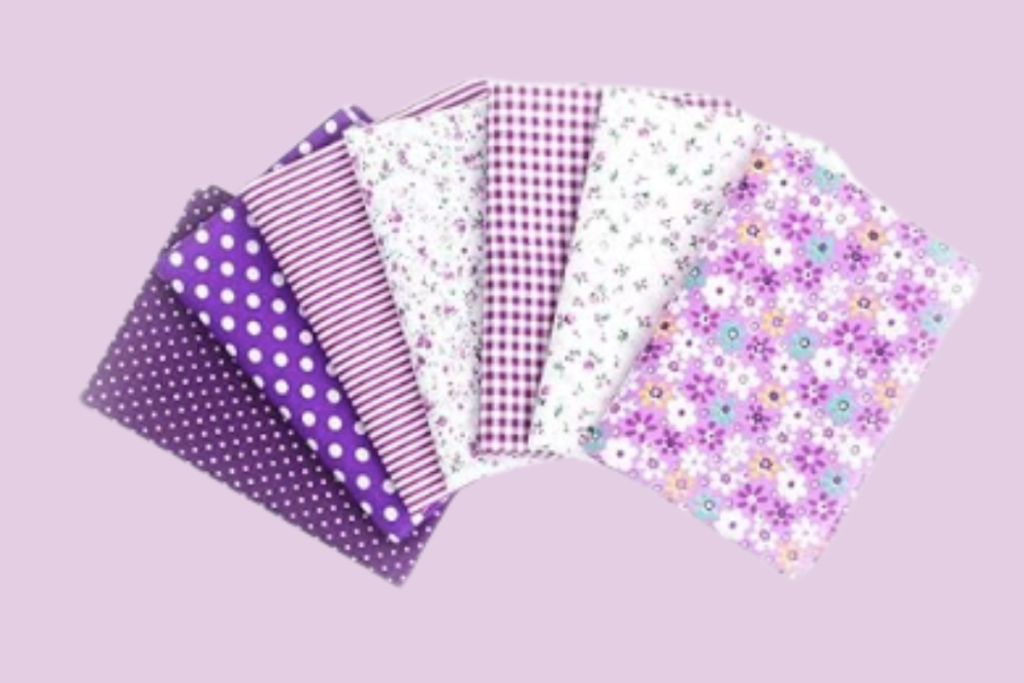

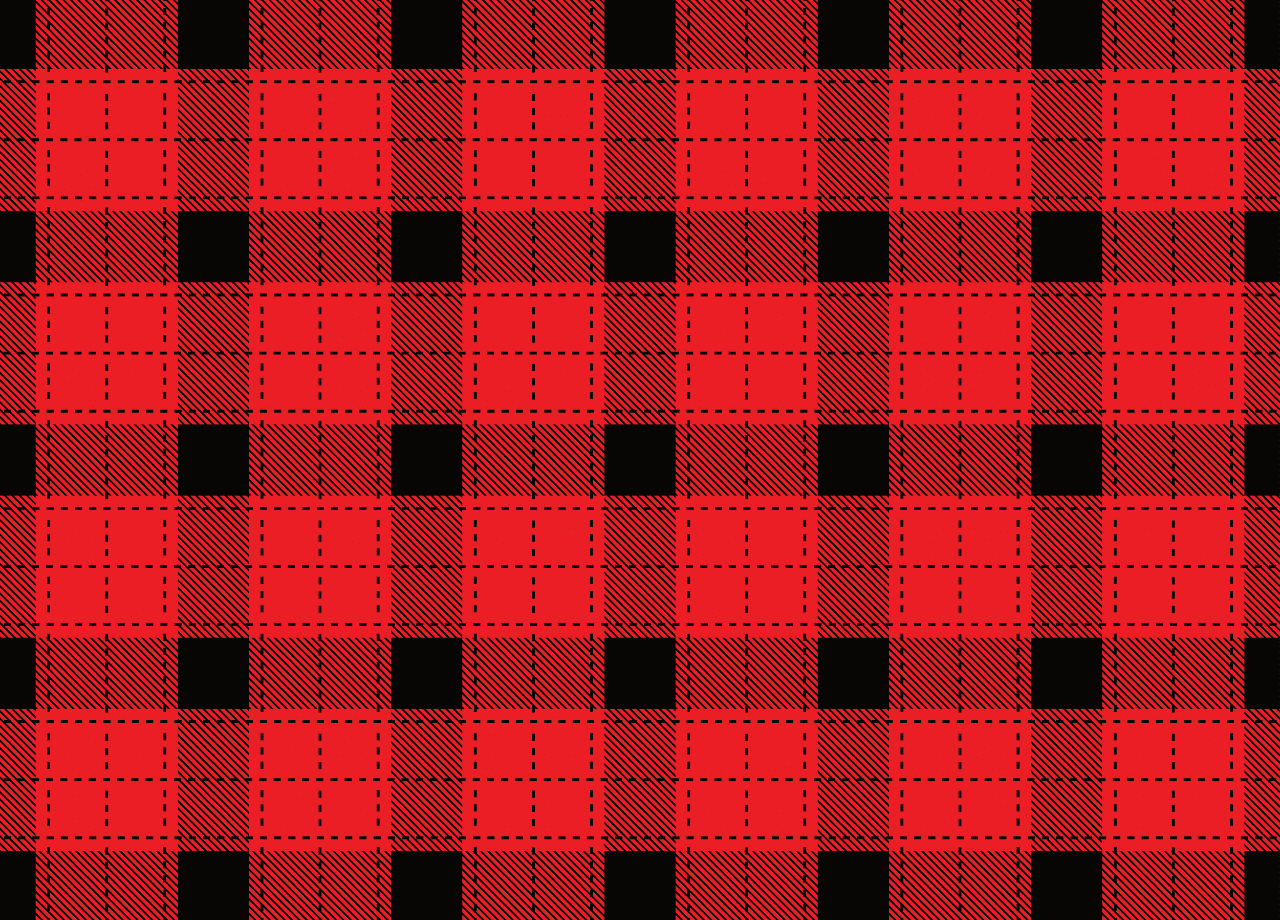

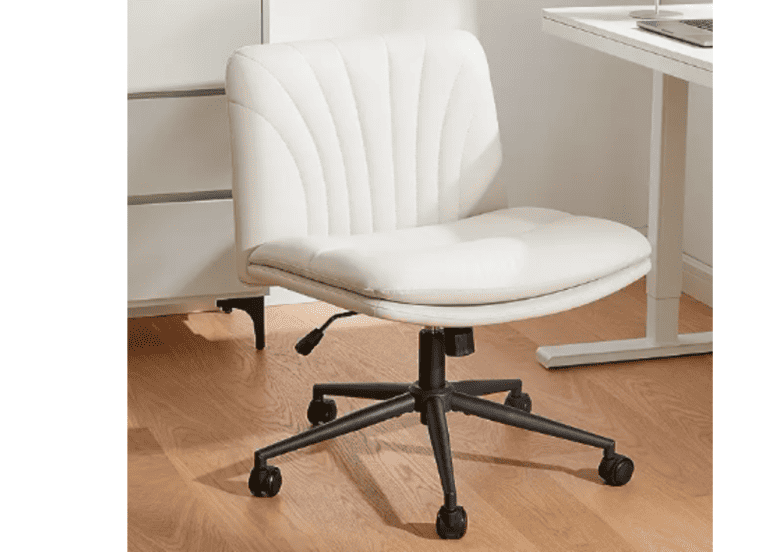
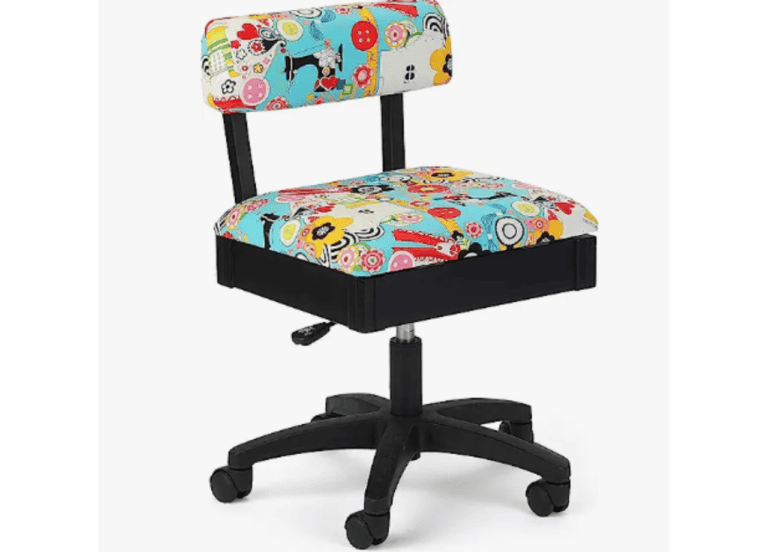
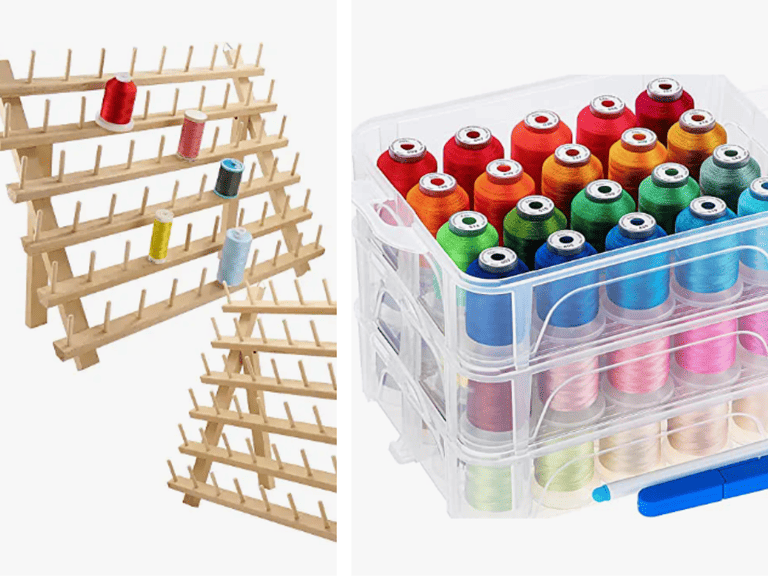
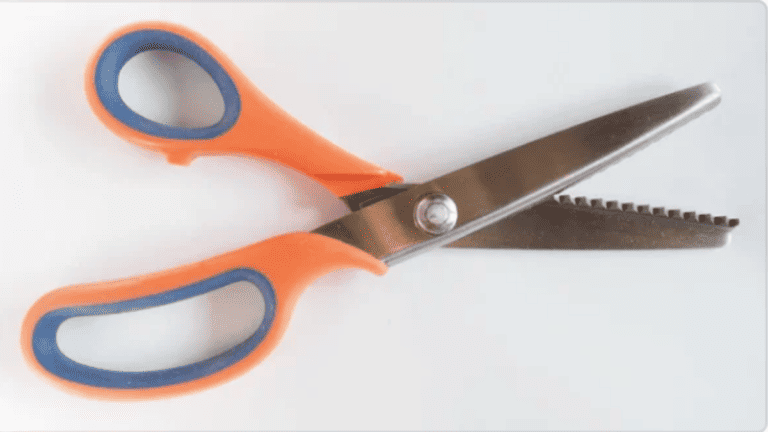
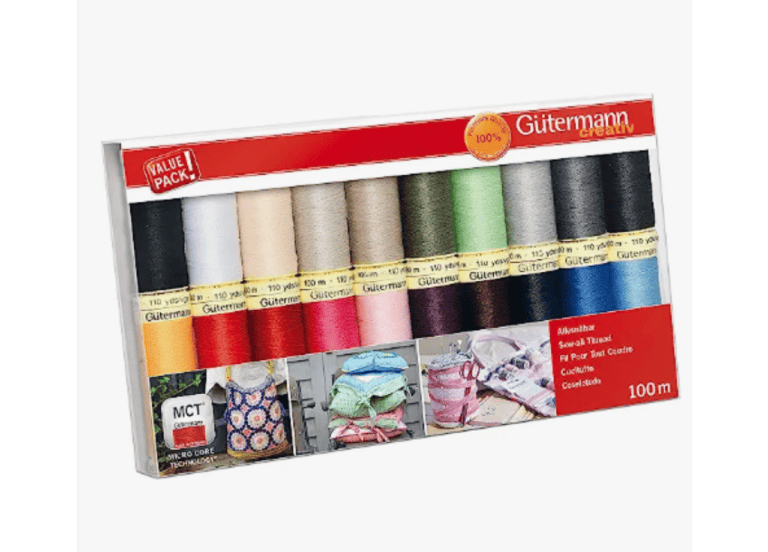
One Comment